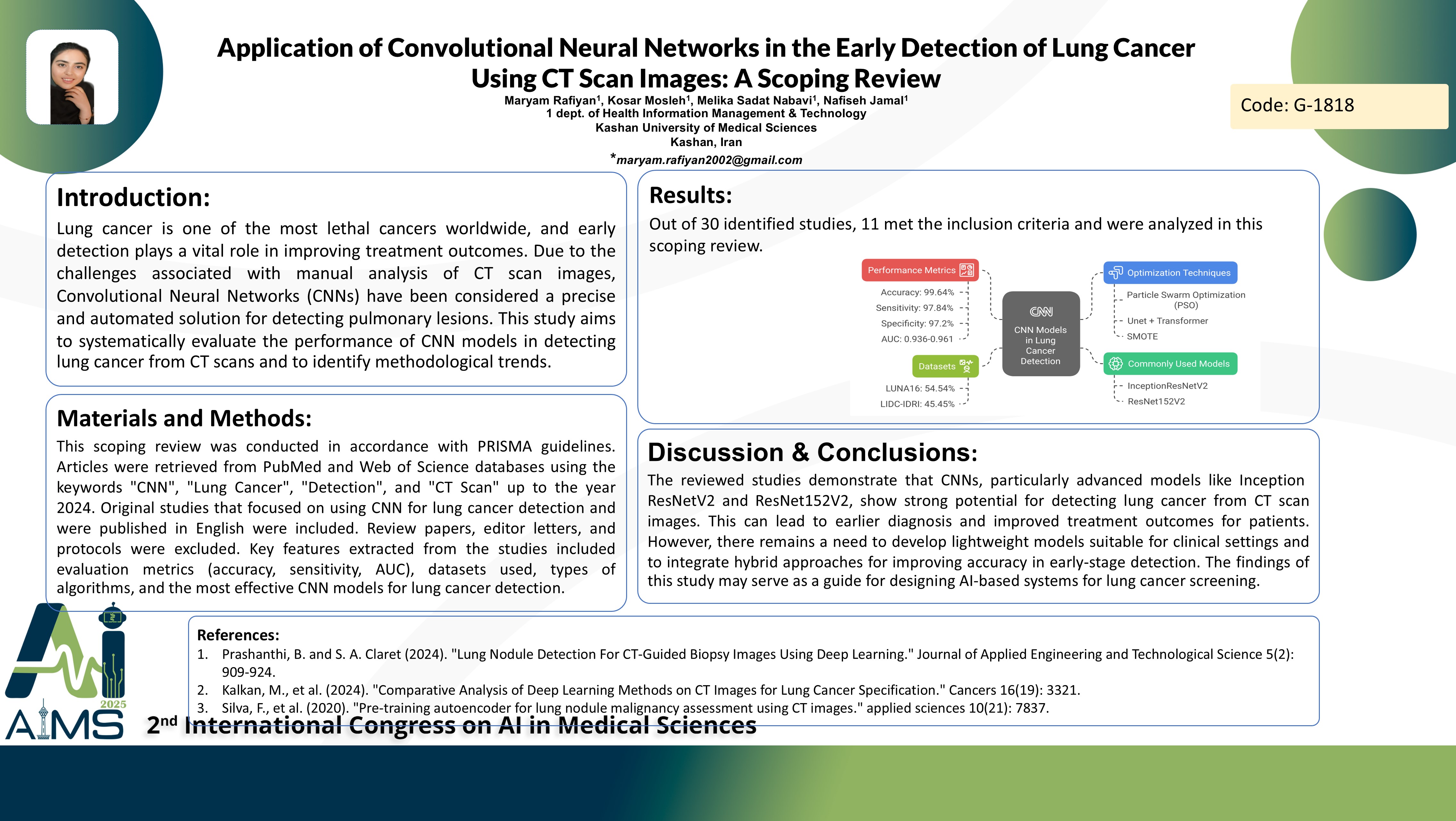کاربرد شبکههای عصبی کانولوشنال در تشخیص زودهنگام سرطان ریه با استفاده از تصاویر سیتی اسکن:مطالعه اسکوپینگ
کد: G-1818
نویسندگان: Maryam Rafiyan * ℗, Kosar Mosleh, Melika Sadat Nabavi, Nafiseh Jamal
زمان بندی: زمان بندی نشده!
برچسب: سیستم های تصمیم یار بالینی
دانلود: دانلود پوستر
خلاصه مقاله:
خلاصه مقاله
Background: Lung cancer is one of the most lethal cancers worldwide, and early detection plays a vital role in improving treatment outcomes. Due to the challenges associated with manual analysis of CT scan images, Convolutional Neural Networks (CNNs) have been considered a precise and automated solution for detecting pulmonary lesions. This study aims to systematically evaluate the performance of CNN models in detecting lung cancer from CT scans and to identify methodological trends. Methodology: This scoping review was conducted in accordance with PRISMA guidelines. Articles were retrieved from PubMed and Web of Science databases using the keywords "CNN", "Lung Cancer", "Detection", and "CT Scan" up to the year 2024. Original studies that focused on using CNN for lung cancer detection and were published in English were included. Review papers, editor letters, and protocols were excluded. Key features extracted from the studies included evaluation metrics (accuracy, sensitivity, AUC), datasets used, types of algorithms, and the most effective CNN models for lung cancer detection. Findings: Out of 30 identified studies, 11 met the inclusion criteria and were analyzed in this scoping review. The most commonly used CNN models were InceptionResNetV2 and ResNet152V2. On average, these models achieved an accuracy of 99.64%, sensitivity of 97.84%, specificity of 97.2%, and AUC ranging from 0.936 to 0.961, indicating high performance in detecting lung cancer. The most frequently used datasets were LUNA16 (54.54%) and LIDC-IDRI (45.45%). Several studies showed that combining CNNs with optimization techniques such as Particle Swarm Optimization (PSO) or hybrid models like UNet +Transformer significantly enhanced diagnostic performance. Additionally, using SMOTE to address data imbalance proved effective in some studies. Conclusion: The reviewed studies demonstrate that CNNs, particularly advanced models like InceptionResNetV2 and ResNet152V2, show strong potential for detecting lung cancer from CT scan images. This can lead to earlier diagnosis and improved treatment outcomes for patients. However, there remains a need to develop lightweight models suitable for clinical settings and to integrate hybrid approaches for improving accuracy in early-stage detection. The findings of this study may serve as a guide for designing AI-based systems for lung cancer screening.
کلمات کلیدی
CNN, Detection, Lung Cancer, CT Scan
